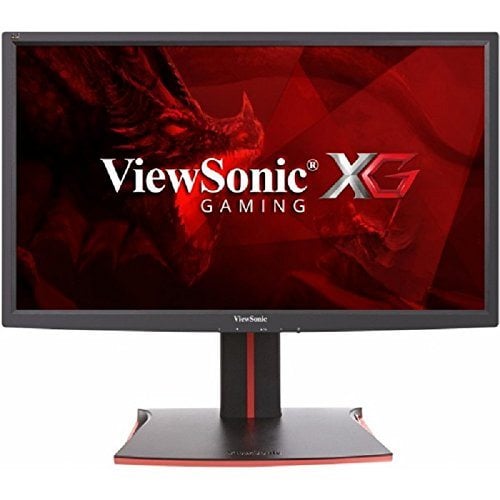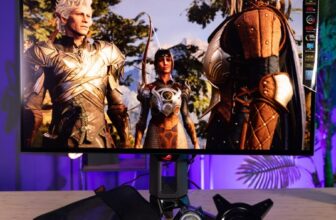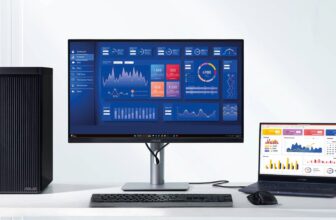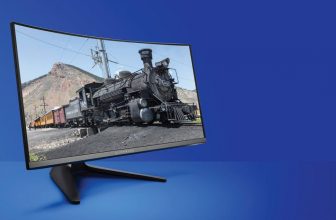ViewSonic XG2401 Review

ViewSonic isn’t perhaps the first name that springs to mind when it comes to gaming monitors, but the XG2401 packs all the goodies into its shell.
Like the other monitors on test this month, it uses a 24in TN panel with a 1080p resolution, and it’s also joined by an adjustable stand, FreeSync support and plenty of connection options.
Table of Contents
[sc name=”ad 2″]
When it comes to looks, though, the XG2401 doesn’t make the best first impression. Its bezels are fairly chunky by modern standards, and the bottom one that accommodates the on-screen display (OSD) controls is considerably wider than most bezels we see now Add in the token red stripes on the stand and base, and you end up with a monitor that looks a touch cheaper than its price suggests. That isn’t disastrous, of course – it’s just that the design could do with a little more finesse.
Another immediately obvious cost-saving feature is the stand, which uses a free-spinning plastic plate on the bottom to provide rotation, rather than a proper joint between the stand and base. This setup means the whole base spins along with the monitor, making for an effective but not exactly elegant bit of engineering. Otherwise, the stand is fine. It offers plenty of height adjustment. 90 degrees of pivot and, of course, tilt. There’s also a carry handle at the top, which can be unscrewed to reveal a 100 x 100mm VESA mount for use with alternative stands.
Connection options are also decent. The obligatory DisplayPort socket is joined by two HDMI ports, plus there’s a two-port USB 3 hub and a headphone jack. The latter two features are situated around the back, so they aren’t that easy to reach, but it’s good to have them. There are built-in speakers too, with passable audio quality.
Color temperature, gamma and contrast are all spot on
The OSD controls on the front bezel work reasonably well too. The buttons are physical ones that sit on the underside and. unlike most modern OSDs, the buttons don’t change function depending on what’s on the screen. As such, you can just learn the layout and never have to worry about double-checking what you’re doing. On the downside, the button layout isn’t that intuitive, so it’s easy to trip up. Thankfully, the menus are cleverly laid out and respond quickly, so overall setup is still fairly quick.
You get little in the way of gaming options though – it’s basically FreeSync and an overdrive option, but there are a decent number of image quality tweaking options. What’s more, you don’t need to do much tweaking for gaming or any other use anyway, as the default image quality is excellent Color temperature, gamma and contrastare all spot on. Viewing angles are also decent and there’s no sign of the usual tendency for TN panels to make light grey colors look off-color or lose definition – an effect you often notice on web page shading or in apps such as Microsoft Office.
This situation holds true at 144Hz too -setting up the display simply required us to drop the brightness and slightly drop the blue color channel from 100 to 93. The ViewSonic also does a fine job when gaming, with no obvious ghosting and no artefacts from aggressive overdrive, and of course, FreeSync works fine too, offering tear-free gaming on decent-spec AMD GPUs.
Conclusion
The ViewSonic XG2401 offers the best out-of-the-box performance on test and doesn’t miss a beat once if s calibrated either Its gaming performance is also very good and it has plenty of features.
As such, if s a shame the styling of this display leaves something to be desired, especially given the price, but if you can forgive its slightly cheap looks, you won’t be disappointed by this panel’s performance.
Verdict
Not much of a desk ornament, but the XG2401 delivers great image quality and solid gaming performance.





